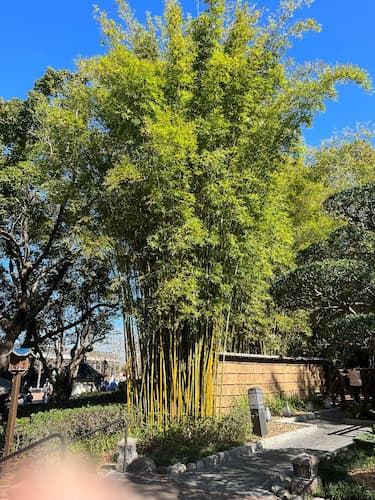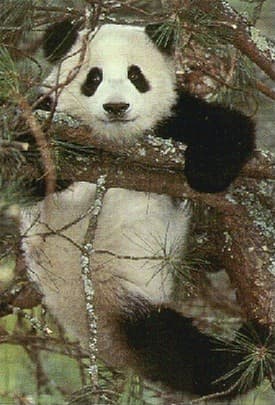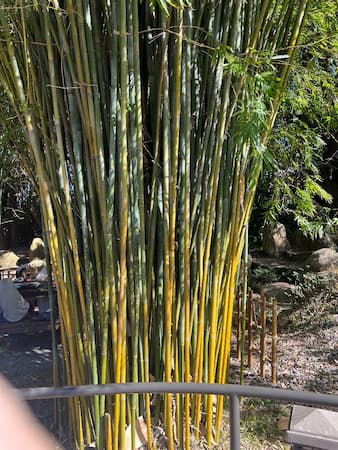How to Grow Bamboo Plants

Growing a Bamboo Garden in Your Yard
Looking to create an exotic look in your backyard? Growing Bamboo will create the setting. And, it’s extremely easy. Its popularity has increased steadily, ever since Giant Pandas were brought to zoos in the U.S. in the early 1970s. Native to China, Bamboo is the favorite food of Panda Bears. Fast-growing and prolific, bamboo can grow 20 feet in a season! However, it is important to note that the plants are very invasive. Once you’ve established your bamboo garden, all you need is a panda bear to control its growth and spread.
There are hundreds of varieties of bamboo. They can be divided into two groups: clumping and running varieties. The running types are considered invasive, as they readily spread their roots far and wide. Just ask the folks at the Washington, D.C. zoo about their bamboo garden. The growing area for runners should be contained in some manner. Indoor and patio varieties grow much smaller. and slower, too. They also survive on less sunlight.
Bamboo is popularly grown indoors and out. Bamboo is also great in containers on patios or decks. We recommend you use a large container.
Did You Know? There are over 300 varieties of bamboo.
Bamboo is a lucky symbol, bringing you good fortune. This is a major cause of its popularity. It is most notably a symbol of being lucky in love.
Bamboo Plant Specifics
Flower Colors: White
Flowers Bloom: Fall, Winter. The plant does not bloom indoors.
Plant height: Varies by variety. 1 to 5 feet tall indoors. 15 -39 feet tall outdoors.
Plant Width: 2 – 3 feet
Sunlight Needs: Filtered bright sun to partial shade.
Plant Hardiness Zones: 10 – 11
Ideal Soil pH: 6.5 – 7.0.
Native To: Asia
Toxicity: Mildly to some animals and pets.
Other Names: Friendly Bamboo, Lucky Bamboo, Ribbon Plant
Perennial, Dracaena sanderiana
Is Bamboo Edible?
Ask a Giant Panda Bear and he will tell you that bamboo shoots are indeed edible. He eats the young tender shoots and young leaves. However, he leaves the tough woody stems untouched.
Humans can eat the tender shoots, too. It’s the new ones that have a slightly yellow color. But, not all varieties are edible. So, we suggest you leave the bamboo shoots for the giant pandas.
Try the dried tea leaves in a tea for a healthy beverage.
Did You Know? Panda bears and humans are not the only creatures that have bamboo in their diet. Fresh bamboo shoots are used as a fodder for farm animals.
Does Bamboo Have Medicinal Uses?
Yes, just ask a Panda Bear!
- Bamboo is healthy with protein, carbohydrates, minerals, and vitamins.
- It has cancer-fighting properties.
- Asian cultures use it to treat menstrual problems.
- It is a natural anti-depressant.
- Bamboo is used as an anti-inflammatory.
- Try using the leaves as a whitener for your teeth.
About Lucky Bamboo
While people sometimes refer to all varieties as “lucky bamboo”, it is actually a specific variety. Lucky bamboo is a smaller variety growing one to five feet. It is perfect for growing indoors or on a patio or deck.
The stalks are grown together in tight clumps. Chinese tradition associates different meanings to the number of stalks. There are symbolic meanings for up to 21 stalks grouped together. Here are the first seven.
- One Stalk – This symbolizes unity and singularity of purpose.
- Two Stalks – This represents love.
- Three Stalks – It represents the trinity of happiness, long life, and wealth. It brings prosperity to your home.
- Four Stalks – This symbolizes death. Similar to the lack of a thirteenth floor on a building, Chinese homes will not have a bamboo plant with four stalks.
- Five Stalks – This represents the five elements of Chinese philosophy: wood, fire, earth, metal, and water. It brings harmony and balance.
- Six Stalks – This symbolizes prosperity and good luck in all of your endeavors.
- Seven Stalks – This brings good luck and blessings to your relationships and partnerships.
Bamboo Plant Propagation
Bamboo can be grown from Rhizomes. They multiply and spread rapidly and are invasive plants. They are easy to transplant. Dig up rhizomes, divide them, and replant them in the desired area.
Not sure what variety to plant? Just ask a Panda Bear. It’s their favorite food.

How to Grow a Bamboo Garden
The basic varieties are categorized as clumping or running, which describes the growth and spread of the plants. If you want to plant them in contained groups, choose the clumping type. This is the best for containers. If you want them for a hedgerow, or to fill a large area, use the running types.
Tip: When selecting and buying bamboo, ask questions about its characteristics. With several hundred varieties, height, appearance, and growing characteristics can make a big difference in the setting you will grow them in.
Prepare the area you want to grow your bamboo in. Dig up and loosen the soil, removing weeds. Dig a hole and fill it with lots of rich, loose soil. Do not use fertilizer or manure when planting, as this can burn the roots. Plant rhizomes 1-2 inches deep. If you have a plant, it should be planted about level with where it is in the container, perhaps an inch or so deeper. Mulch around the plants, and keep the soil moist. Once the plants are established, allow the soil to dry a little between watering.
Tip: Bamboo will tell you when it’s thirsty. The leaves will begin to roll up.
Bamboo plants will grow well in full sun to partial shade. They are shade tolerant and will look good in shade gardens. They prefer rich, well-draining soil.
Bamboo roots do not like wet soil. Also, they are sensitive to chlorine and high levels of minerals in the water. We recommend using bottled or distilled water. Or, you can collect rainwater.
Add a general-purpose fertilizer once a month to promote fast, lush growth.

Controlling Invasive Growth
Running varieties of Bamboo is invasive. Your bamboo garden will be full before you know it. You will likely want to contain them. Stream beds or ponds make a natural barrier. A wide sidewalk will also contain them. Border edging should be 24-30″ inches deep to stop the runners.
Insects, Pests and Plant Disease
If insect or disease problems occur, treat early with organic or chemical insect repellents and fungicide.
Giant Panda Bears love bamboo. Fortunately, pandas are not on the roam in your area.
Related Articles
People who read this article also like:
Panda Mania – All about Panda Bears
Please support our site. Shop for:
- rmmatthews100@hotmail.com
- 585-721-6528
- Rochester, NY
©1999-2024 GardenersNet.Com, All Rights Reserved

